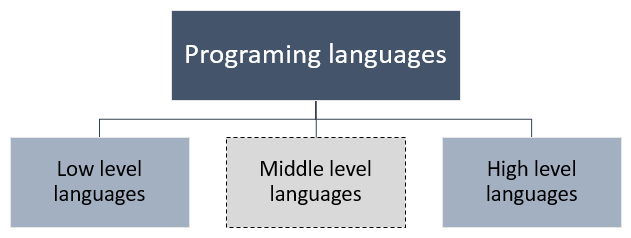Explain The Classification Of Programming Languages In Brief.
Category: PYTHON | 18th June 2024, Tuesday

Programming Languages Can Be Classified In Various Ways Based On Different Criteria. Here Is A Brief Overview Of The Main Classifications:
Based On Paradigm
- Procedural Languages: Focus On A Sequence Of Procedures Or Steps To Solve A Problem. Examples: C, Pascal.
- Object-Oriented Languages: Organize Code Around Objects And Data Rather Than Actions And Logic. Examples: Java, C++.
- Functional Languages: Treat Computation As The Evaluation Of Mathematical Functions And Avoid Changing State Or Mutable Data. Examples: Haskell, Lisp.
- Logic Languages: Use Formal Logic To Express Computations And Focus On What To Solve Rather Than How To Solve It. Example: Prolog.
- Scripting Languages: Often Used For Writing Short Programs Or Scripts To Automate Tasks. Examples: Python, JavaScript.
- Concurrent Languages: Designed To Handle Concurrent Computation. Examples: Go, Erlang.
Based On Level
- Low-Level Languages: Close To Machine Code And Hardware, Providing Little Abstraction From The Hardware. Examples: Assembly Language.
- High-Level Languages: Provide High Abstraction From Machine Code, Easier To Write And Understand. Examples: Python, Java.
Based On Execution
- Compiled Languages: Translated Directly Into Machine Code By A Compiler, Leading To Faster Execution. Examples: C, C++.
- Interpreted Languages: Executed Line-by-line By An Interpreter, Which Can Make Them Slower But More Flexible. Examples: Python, Ruby.
- Hybrid Languages: Combine Compilation And Interpretation. Examples: Java (compiled To Bytecode And Then Interpreted By The JVM).
Based On Typing
- Static Typing: Types Are Known At Compile Time, Which Can Lead To Earlier Error Detection. Examples: Java, C++.
- Dynamic Typing: Types Are Known At Runtime, Providing More Flexibility. Examples: Python, JavaScript.
Based On Usage
- General-Purpose Languages: Designed To Be Used For Writing Software In A Wide Variety Of Application Domains. Examples: Python, Java.
- Domain-Specific Languages: Tailored To A Specific Application Domain. Examples: SQL (for Database Queries), HTML (for Web Pages).
Based On Syntax
- C-Style Syntax: Use Syntax Similar To C. Examples: C++, Java, JavaScript.
- Python-Style Syntax: Known For Readability And Simplicity. Example: Python.
- Lisp-Style Syntax: Known For Its Unique Parenthetical Structure. Example: Lisp, Scheme.
Based On History And Development
- First Generation (1GL): Machine Languages Directly Understood By The Computer.
- Second Generation (2GL): Assembly Languages With Symbolic Instructions.
- Third Generation (3GL): High-level Procedural Languages. Examples: Fortran, COBOL.
- Fourth Generation (4GL): Languages Closer To Human Languages And More Abstracted From Machine Languages. Examples: SQL, MATLAB.
- Fifth Generation (5GL): Languages Based On Solving Problems Using Constraints Given To The Program. Examples: Prolog.
Understanding These Classifications Helps In Choosing The Right Programming Language For A Given Task And Understanding The Trade-offs And Design Principles Behind Different Languages.
Tags:
Classification Programming, Python Programming, Programming Language
